12. May 2015 - DOI 10.25626/0041
Florian Peters is a historian and research associate in the Berlin Research Department of the Institute of Contemporary History. He completed his Ph.D. at the Humboldt University with a dissertation on the culture of history in late socialist Poland. His research focuses on the history of East Central Europe in the twentieth century, especially social transformations since the 1970s. He is the co-author, with Rudolf Jaworski, of Alltagsperspektiven im besetzten Warschau. Photographien eines deutschen Postbeamten 1939-1944 (Everyday perspectives in occupied Warsaw: The photographs of a German postal worker, 1939-1944; Marburg: Verlag Herder-Institut, 2013).
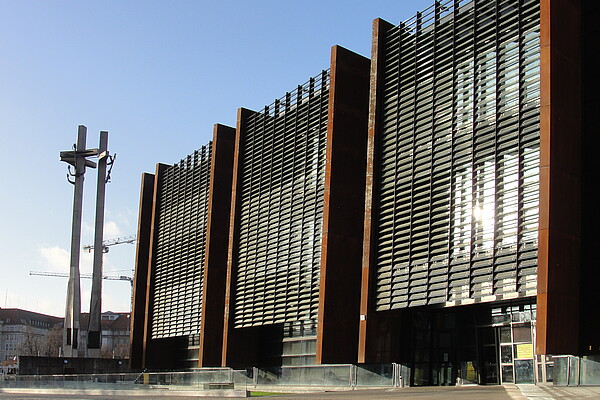
The European Solidarity Center (Europejskie Centrum Solidarności, ECS), which opened its doors in Gdańsk, Poland, in August 2014, is neither the first nor the last historical museum to be opened or soon to be opened in Poland. Maybe this is what led the museum’s founders, grouped around political scientist Basil Kerski, to emphasize the distinguishing characteristic of their institution, proclaiming it to be the “world’s first museum of solidarity with a capital and a lowercase S.” The center therefore has two ambitious aims: presenting museum exhibits on the history of Poland’s Solidarity movement as well as on the present-day meaning of solidarity as a social value. At the same time it tries to grasp these two as an “important aspect of Europe’s founding myth.” In short, the new museum-makers in Gdańsk seem to be aiming high.[1]
Perhaps such a grand gesture is the only appropriate one at this almost mythical location on the edge of Gdańsk’s Old Town, where the museum was built. The imposing new structure is located right next to historical Gate No. 2 of the now largely defunct Gdańsk Shipyard (Stocznia Gdańska), where in August of 1980 Lech Wałęsa successfully led striking shipyard workers in their struggle to establish the first independent trade union in the Eastern bloc. Towering over the museum are the 40-meter-high crosses of the monument erected in December 1980 under the initiative of Solidarity, to commemorate the shipyard workers murdered by security forces during mass protests ten years earlier (Pomnik Poległych Stoczniowców 1970). This key location of memorial culture harking back to the Solidarity movement is a perfect example of how closely intertwined history and the present have always been in the discourse and practice of Solidarity. A movement that perceived itself from the very start as deeply historical seems almost predestined to have a museum in its name that combines the past and the present.
But is it really possible for an experience-oriented educational museum to revive the specific historical understanding of such a revolutionary movement? Its prominent location does not make it any easier for the new museum to emerge from the shadows of the monumental crosses of 1980. In the following I would like to investigate whether the new permanent exhibition merely reproduces the subtext of the old monument in a modernized guise, or if and to what extent it does in fact fulfill its claim to historicize this older subtext in an appropriate way while at the same time bringing it up to date, thus engaging with the problems of the present.
Among the many new historical museums in Poland that have opened in recent years or are soon to open their doors to the public, the Solidarity Center in Gdańsk is unique in that it does not address the classic themes of Polish historical culture, those more or less linked with the Second World War, e.g., the Warsaw Uprising and the Holocaust. Unlike the Second World War, the Solidarity movement emerged just a generation ago. In purely organizational terms, the trade union Solidarity is not even history, but is still in existence today. This comparatively short span of time between the events commemorated by the Solidarity Center and the museum itself means that many protagonists of those days are still active in public life today and often voice their opinions vociferously.
The question of what Solidarity actually was and what role it played in Polish and European contemporary history is still a controversial one in Poland. This is not necessarily due to the continued existence of Solidarity as a politically oriented trade union – which of course has enemies along with friends – nor to the presence of prominent contemporary witnesses in public discourse. The crux of the issue is how Solidarity of 1980-81 is seen in relation to the sea change of 1989, and how one assesses the subsequent transformation of the political and economic system, including attendant social hardships. The battle over Solidarity is therefore inextricably linked to the divergent conclusions about the historical compromise between opposition and government representatives at Round Table talks, as well as about the genealogy of present-day, democratic-capitalist Poland. Whereas the Round Table talks were widely perceived as a success story abroad, the negotiated character of the transformation has been the subject of severe criticism in Poland from the very outset. Convinced anticommunists on the political right, in particular, vehemently rejected this compromise solution, claiming it was too pro-communist and interpreting it as a betrayal of Solidarity’s founding values by Poland’s liberal elite.
Bearing all this in mind, it is clear that the way the Solidarity Center defines its subject matter is by no means self-evident. Should Solidarity be primarily remembered as a trade union, as a national liberation movement, or as a synonym for an oppositional counter-society? What were the movement’s primary aims and values? Are the relatively marginal opposition groups of the late 1970s and the Polish underground during the period of martial law also part of its history? Did Solidarity of 1989, newly founded by Lech Wałęsa, have anything to do with the movement of 1980? How important were legendary leaders such as Wałęsa in comparison to the millions working at the grass roots? How do the myth and reality of this social movement compare? And finally, what was the actual role of this movement in bringing down state socialism in Eastern Europe? All of these questions are subject to debate, and opinions in Polish society are correspondingly diverse.[2]
Consensus is probably greatest with regard to the last question. Hardly anyone in Poland would play down the importance of Solidarity and point instead to the key role played by Gorbachev or the economically induced implosion of the Eastern bloc. In May 2011, at the groundbreaking ceremony for the Solidarity Center, Poland’s president Bronisław Komorowski expressed the project’s underlying aim to help create international public awareness for Poland’s contribution to ending state socialism in Eastern Europe. "We all remember our conflicting emotions, our refusal to accept that other events, other important events have become icons of transformation in post-1989 Europe. We remember well that we hoped Polish Solidarity would everywhere become a symbol of positive change in our part of the world."[3] The new museum is intended not least of all to counterbalance the iconic images of the fall of the Berlin Wall and make sure that the Solidarity movement becomes part of a collective European memory along with it.
And yet positing that Solidarity is Poland’s contribution to Europe’s founding myth is accompanied by a natural tendency to gloss over the controversies surrounding the movement. Whereas any act of museumization requires a certain minimum consensus, in the case of the Solidarity Center it’s a fine line indeed between the efforts to avoid internecine warfare among various political interpreters of the historical past and the construction of a new and affirmative master narrative. There is no denying that the Polish opposition movement, which always perceived itself as being deeply historical and endeavored to develop its own historical culture, offers plenty of material for historical myth-making.
In this respect, the European Solidarity Center’s location is a blessing and a curse. On the one hand, the center clearly profits from the enormous symbolic capital of the historical shipyard gate and the now historical monument to the fallen shipyard workers. Petty conflicts over restoring the gate to its original state do nothing to alter this fact.[4] On the other hand, there is a considerable risk of being awestruck by the historical myth and perpetuating the symbolic presentations of once subversive characters as part of a hegemonial and legitimatory historical discourse. An approach like this, blurring the historical breach between then and now, would aggravate rather than facilitate an understanding of the historical importance of Solidarity.
Standing nowadays on "plac Solidarności", the spacious square between monument, museum and shipyard gate, it is hard to imagine what it was like back then when an unknown electrician named Lech Wałęsa held his first public speech there, on December 18, 1979. Under the watchful eyes of security forces, he spoke at an illegal ceremony commemorating the victims of the December 1970 riots, a ceremony organized by the Gdańsk Initiating Committee of Free Trade Unions in conjunction with the student-based Young Poland Movement (RMP). He proclaimed that in a year’s time, on the tenth anniversary of the uprising, a monument would be erected at that very site, a notion that must have seemed fanciful – if not downright megalomaniacal – to his listeners.[5] But the memorial created in December of 1980 was hardly the improvised one that Wałęsa had probably imagined; the monumental crosses erected in a lavish dedication ceremony immediately transformed this memorial site into a central symbol of victory, these shipyard workers, and with them the whole of Polish society, having stood their ground against a state-socialist regime. The monument became a symbol of Solidarity itself. Timothy Garton Ash put this in a nutshell, commenting at the time, if somewhat sardonically, that, "Solidarity’s best product was monuments."[6]
To be sure, the zeal of the Polish opposition in the arena of historical culture, sometimes baffling to outsiders, was much more than just a safety valve to compensate for the social frustration and tension caused by a desolate economic situation and an uncertain future. Commemorating the murdered workers of December 1970 was as genuine a concern to the followers of Solidarity as the visible anchoring of historical tradition-building in Polish national history. This focus on the past was not an end in itself, but a core component of the comprehensive political and moral renewal (odnowa) sought in the present. It was precisely because they had no clear notion of what form economic and political reforms should take that the opposition movement drew on the conceptual frameworks and values of the past to formulate their hopes of a fundamental transformation in the here and now. Using the historical interpretative strategies readily espoused by the opposition movement, Solidarity constituted itself as a collective subject of the desired historical transition, thereby serving as a convenient sounding board for Polish hopes of a better future. It was in this vein that history for millions of Poles became an ever more tangible part of their day-to-day lives against the backdrop of an apparently relentless process of social self-organization.
No other place represents this experience more eloquently than the monument to the fallen shipyard workers. By the same token, the location of the Solidarity Center clearly shows that not much is left today of this original context of self-historicization. No matter how faithfully the historical shipyard gate is restored, either way it belongs to the past, the vast shipyard complex having long since become a postindustrial wasteland in the wake of the radical changes brought on by the capitalist world market. Only the distant cranes at the far end of the shipyard remind us of the once mighty Gdańsk shipbuilding industry. Other scattered vestiges of historical structures, such as the shipyard’s labor safety and hygiene room (Sala BHP) where the historical agreement between the strike committee and government representatives was negotiated and signed in August of 1980, do little to alter this overall impression.
Hence the social and cultural milieu in which Solidarity emerged as a mass industrial workers' movement has disappeared here, just as it has in many other places in Poland and East-Central Europe. Yet the authentic place of its historical culture of remembrance has largely been preserved. Taking advantage of this historically charged place is not only legitimate; it’s imperative. The greatest challenge faced by the Solidarity Center in Gdańsk, however, is conveying the specific social and cultural milieu which served as a breeding ground for the movement, a milieu that the majority of visitors today are not necessarily familiar with. Without putting things in this historical context, any attempt at museumizing this movement runs the risk of being nothing more than the sterile regurgitation of this myth.
The newly constructed European Solidarity Center, whose ambitious architecture convincingly evokes the raw materiality of the city’s once considerable shipbuilding industry, is a perfect starting point to reflect on the discrepancy between spatial and social orders of then and now. The multi-winged building is covered outside and inside by rusty sheets of COR-TEN weathering steel, and with its high, slightly slanted walls is vaguely reminiscent of a ship’s hull. Despite its size, the steel behemoth has something surprisingly dynamic about it. Its rusty steel façade is obviously not trying to please the eye in a conventional way, but generates a kind of cognitive dissonance. The same goes for its slanted walls, which seem to run counter to the usual notion of vertical space. Both of these features seem fitting for a historical museum of Solidarity.
Yet even the most eye-catching architecture needs to be filled with life if the museum it houses is to live up to its claims. The building, in fact, contains much more than “just” a museum. Apart from exhibition space and the obligatory cafeteria and restaurant, there are a library, an archive, an educational center complete with a play corner, a research division, and even office space for civil-society organizations. But for now, and in the foreseeable future, the heart of the Solidarity Center is the 3,000 m2 permanent exhibition on the history of the Solidarity movement. It is worth having a closer look at this.[7]
The exhibit is divided into six large rooms, which take the viewer from Polish state socialism of the 1970s to the peaceful revolutions of East-Central Europe in 1989. These six rooms are chronological with one major exception: the tour begins with the “birth of Solidarity” in August of 1981 at the Lenin Shipyard in Gdańsk. Only in an adjacent room does the visitor learn about what preceded this historic moment. The last part of the chronological exhibit leads to a room named after Polish pope John Paul II, intended as a space for reflection. In terms of design, the exhibit organizers have consistently relied on spatial installations and multimedia presentations.
The first room succeeds admirably, addressing the August strikes of Gdańsk shipyard workers. A relatively large number of original displays enhances the exhibit, among them the operator’s cab of Anna Walentynowicz (whose politically motivated dismissal was one of the immediate causes of the strike), the famous banner “Workers of all factories, unite!” and a particular highlight: the two wooden tablets with the 21 strikers’ postulates now listed by UNESCO as part of the common heritage of humankind. The room contains original pieces from the everyday lives of shipyard workers, including changing cubicles, time-card machines, and tools. Added to this are more than 2,000 hard hats fastened to the ceiling. The narrative begins with an animation film of the outbreak of the strike projected onto a historical map of the Lenin Shipyard. It ends with film footage of the successful negotiations between the strike committee and government representatives.
This is an impressive start, highlighting the social context of these workers’ protests, an aspect not readily apparent at the museum location and its immediate surroundings. The museum-makers boldly present this aspect, at the risk of confusing visitors with little prior knowledge of the historical-political background of the strike movement. This information is provided in the adjoining room. Unfortunately, the museum’s presentation of everyday life in Poland and the pre-1980 anticommunist protest movement are not quite as compelling as the room before. The obvious attempt to do justice to a variety of aspects has resulted in an all-encompassing approach. Polish state socialism is illustrated by way of installations on prison and interrogation cells, but also living rooms and empty shop counters, presenting Poland as a repressive regime as well as a place where daily life was marked by an economy of scarcity. The visitor is provided with a wealth of information about dissidents and resistance in the form of an installation about the workers’ uprising of December 1970 and a variety of display boards about Polish opposition groups of the late 1970s. The real dimensions of these phenomena and how they are interconnected remains rather vague, however. Unique original displays such as the bullet-ridden leather jacket of Ludwik Piernicki, a young shipyard worker killed in Gdynia in 1970, and the desk of leading dissident Jacek Kuroń, where activists of the opposition intelligentsia collected news about the strikes and passed them on to Western media, are not really shown to their best advantage in this part of the exhibit.
Much more impressive is the third room of the exhibit, which presents in a multifaceted manner the social upheaval that was taking place in the sixteen months before Solidarity was outlawed. Here the exhibit is mostly comprised of information panels, with few actual objects. But the panels are grouped in such a way as to form the "Solidarność" (Solidarity) logo, visible to the viewer through its reflection on a mirrored ceiling and thus incorporated along with the visitor into a kind of live installation. The inner panels discuss various aspects of social self-organization, whereas the outer panels are mainly dedicated to the conflicts between the burgeoning union movement and a rigid state-socialist regime. One focus of the presentation is the first national delegates’ conference of Solidarity that took place in the fall of 1981. Cultural highlights are also addressed, such as the awarding of the Nobel Prize in Literature to Czesław Miłosz in December 1980 and the yearly rock-music festival in Jarocin.
This bright, almost cheerful room is followed by the section on martial law – a dark chapter in Polish history with a correspondingly dark atmosphere here. The visitor is literally enveloped by two video projection walls. Footage of approaching tanks alternates with the notorious television address of Wojciech Jaruzelski on December 13, 1981. This portal-like installation is rounded off by a blown-up reproduction of Chris Niedenthal’s highly symbolic photograph depicting an armored vehicle and a group of soldiers in front of "Moskwa" (Moscow) cinema in Warsaw, with a giant poster advertising Francis Ford Coppola’s "Apocalypse now" (in Polish, "Czas apokalipsy") in the background. The center of the room is occupied by a freely accessible police van, the kind used to put down protesters, and a symbolic reconstruction (by well-known artist Dorota Nieznalska) of the Gdańsk Shipyard gate that was knocked down by tanks. Another reminder of the repressive regime are the two reconstructions of internment cages used to detain thousands of opposition members in the first months of martial law, whereas the last part of the room portrays the opposition’s counter-reaction to the imposition of martial law. Paradigmatic of this are a number of homemade printing presses or ones smuggled in from the West.
The transition is rather abrupt from this to the following room, depicting the "road to democracy" in the years 1988-89. Whereas the social agony of the mid-1980s is passed over in silence, the visitor is presented with a suggestive progression of developments, beginning with the Pope’s first visit to Poland in 1987 and the wave of strikes in the summer of 1988, spanning the Round Table talks, and leading to the first partly democratic parliamentary elections on June 4, 1989. One sees Catholic intellectual Tadeusz Mazowiecki arm in arm with Lech Wałęsa at the forefront of striking workers, then shortly afterwards giving the sign of victory on the speakers’ platform of the Sejm after being elected the first noncommunist prime minister in the Eastern bloc. Between these two motifs is an elaborate multimedia display dedicated to the Round Table. Devoid of any actual objects, it nonetheless tries to enable visitors to relive the negotiations between communists and the opposition, presenting it as a decisive transformation of the public sphere. An almost amusing counterpoint to this is the display of campaign posters of opposition candidates, almost all of whom had themselves photographed with popular hero Lech Wałęsa.[8]
In the final room of the exhibition, the perspective is broadened for the very first time to include events outside of Poland, briefly portraying the peaceful revolutions of 1989-91, from the GDR to the Baltics states. No attempt is made to answer the question of what actually changed in a concrete way as a consequence of these upheavals in Poland and Eastern Europe, and how these changes were related to the aims of the opposition and striking shipyard workers of 1980. The concept of freedom that is suddenly foregrounded here with the catchphrase “triumph of freedom” is not really expanded on in any meaningful way. Instead, the room’s central installation presents excerpts from the Universal Declaration of Human Rights in a multitude of languages. The actual end of the exhibit narrative takes the form of a well-known contemporary visualization of the historical self-understanding of the opposition: the cardiogram poster of Czesław Bielecki with the famous wordmark of Solidarity as the culmination of a long line of Polish upheavals and unrest, beginning with the Warsaw Uprising of 1944 and including the many revolts against state socialism. The image serves here as a giant feedback board taking up an entire wall. Visitors can leave their comments on little notecards, thus inscribing themselves in the historical tradition of Solidarity.
All in all there is a conspicuous reticence when it comes to texts in the exhibition, apart from the Polish and English object labels found throughout the museum. Those looking for more detailed information are referred to the ubiquitous touchscreen displays, where it is possible to reference interviews with contemporary witnesses and historians, as well as hundreds of records on the various strikes, structures, and activists of the opposition movement. Given the museum’s multimedia barrage, with countless visual and sometimes rather obtrusive sound effects, it is doubtful that many visitors will actually take the time to do so.[9] The eponymous hall in honor of Pope John Paul II at the end of this veritable exhibition parcourse, containing an epigram by the Polish pope and a seemingly random variety of photos seems to be intended as a chance to stop and catch your breath after enduring the sensory overload encountered in the rooms before.
The new permanent exhibition at the European Solidarity Center can hardly claim to be a multiperspective presentation of the still controversial history of the anticommunist opposition movement. Instead, it offers a fairly unambiguous interpretation of the past, the details of which get rather fuzzy when it comes to the question of what factors were crucial for Solidarity's success. It seems that the exhibit organizers were trying their best to please everyone. No one has been left out – from opposition members in the leftist-socialist influenced Workers’ Defense Committee (KOR) to the conservative Confederation of Independent Poland (KPN), from the Polish pope down to alternative youth culture of the late 1980s. All of them are presented here as being part of the historical path from the August strike at the Gdańsk Shipyard to the first noncommunist government of Mazowiecki, without bothering to explain the influence each one had on the overall dynamic of transformation. While steering clear of controversy, the exhibition runs the risk of being faulted with a certain arbitrariness.
Despite this all-encompassing approach, the narrative of Solidarity history presented is almost single-mindedly focused on 1989 as the culmination point, the teleological "triumph of freedom". By placing such overriding importance on the goal of freedom, the question that really begs discussion – what the role of solidarity should be within the system of values of today’s democratic society – is marginalized right from the start. With that, the opportunity is lost to discuss in an open and fruitful way the precarious relationship between liberty, equality, and fraternity (solidarity, to use the gender-neutral, modern form) – a subject of debate ever since the French Revolution. Moreover, the history of the Polish opposition movement is not presented as a baseline for the self-understanding of present-day Polish society, but is degraded into a mere antecedent to the transformation of 1989 and the ensuing years. In endeavoring to avoid the pitfalls of inner-Polish controversies, the success-story narrative is given such pride of place that rather than critically assessing the myth of Solidarity the exhibition merely seems to confirm it.
This might be expected, given the historical-political aims of the Solidarity Center. The impressive and innovative form of presentation that the exhibit’s organizers have found in many instances makes it all the more unfortunate that the focus on achieving Europe-wide recognition for Solidarity stands in the way of a more critical, dialogue-oriented approach. The extensive use of multimedia, interactive, and experience-oriented installations may meet the current demand in Poland for "modern" museums,[10] but it does little to move beyond the narrative of Solidarity as the heroic epic of a bygone era and ask what it means for the present.
After visiting the ECS, one wonders which primary target group the center has in mind. Is it meant to be a place for the participants and contemporary witnesses of Solidarity to meet and reminisce on their experiences? Is it intended for Polish and foreign tourists, or mainly for Polish school children? Is it part of an overall policy of achieving more international recognition for the historical role of Solidarity in Europe, or does it view the reappraisal of the recent past as the nation’s educational task? Or is it maybe just yet another way to help make Gdańsk more attractive to tourists, a port city like so many others in Europe (Amsterdam, Hamburg, etc.) faced with the challenge of revitalizing its unused industrial harbor? The answer to these questions will depend on the future cultural, artistic, and scholarly events to be held in the center alongside the permanent exhibition.
These initiatives will offer a chance to highlight the European dimension of the Solidarity Center. For now, however, the narrative offered by the museum’s permanent exhibition barely extends beyond a narrow Polish context. Which is not necessarily a bad thing, because Solidarity, after all, was very unique for its times. But it would nonetheless be a pity if the European character of the center were limited to its cofinancing from EU funds[11] and the admittedly understandable desire to put Poland on the map by emphasizing its achievements in its national struggle for liberation. In this case it wouldn’t be far-fetched to say that the concept of Europeanization, instead of leading to an expected opening and pluralization of historical interpretations, is actually smoothing over and underwriting the Polish grand narrative.
That Poland is endeavoring to secure its place in Europe by drawing on its history, a history so often controversial in recent decades, is surely one key reason why the Gdańsk Solidarity Center has chosen to leave behind the inner-Polish feuds over how to interpret its recent past.[12] Nevertheless, one can only hope that the center resists the temptation to gloss over the many productive contradictions and the essential eclecticism of Solidarity in favor of a more “presentable” history. How much more inspiring it would be to take the rough, rusty surface of the structure as an incentive to discover and resurrect the ambiguity, spontaneity, and subversiveness of the Polish opposition movement. This, in fact, is the real fascination of this chapter in Polish contemporary history, while at the same time offering an opportunity to bridge the gap between the past and present – the avowed goal of the ECS.
Translated by David Burnett
Florian Peters: Solidarność Yesterday – Solidarity Today? The European Solidarity Center in Gdańsk endeavors to combine the past with the present. In: Cultures of History Forum (12.05.2015), DOI: 10.25626/0041.
Copyright (c) 2015 by Imre Kertész Kolleg, all rights reserved. This work may be copied and redistributed for non-commercial, educational purposes, if permission is granted by the copyright holders. For permission please contact the editors.
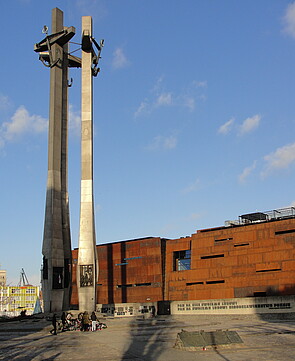
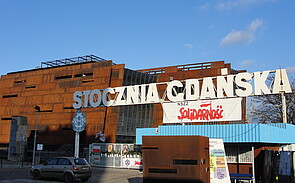
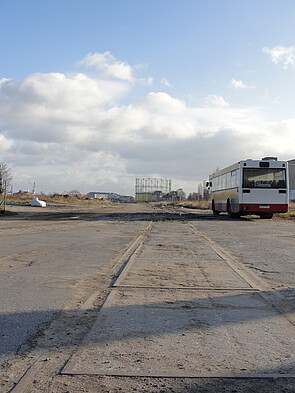
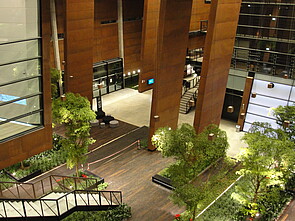
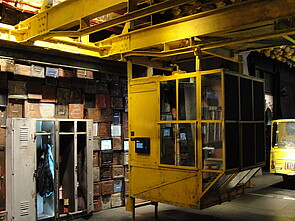
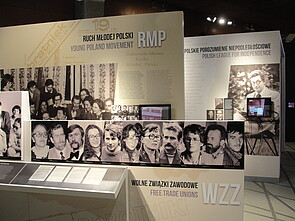
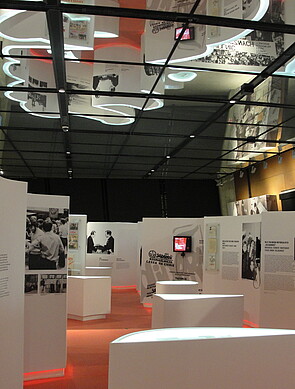


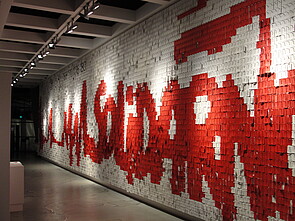
Lidia Zessin-Jurek · 20.04.2023
A History that Connects and Divides: Ukrainian Refugees and Poland in the Face of Russia’s War
Read more
Lidia Zessin-Jurek · 20.12.2021
Trapped in No Man’s Land: Comparing Refugee Crises in the Past and Present
Read more
Interview · 08.03.2021
A Ruling Against Survivors – Aleksandra Gliszczyńska-Grabias about the Trial of Two Polish Holocaust...
Read more
Lidia Zessin-Jurek · 03.09.2019
Hide and Seek with History – Holocaust Teaching at Polish Schools
Read more
Maciej Czerwiński · 11.04.2019
Architecture in the Service of the Nation: The Exhibition ‘Architecture of Independence in Central E...
Read more
Get this article as PDF download (including pictures).